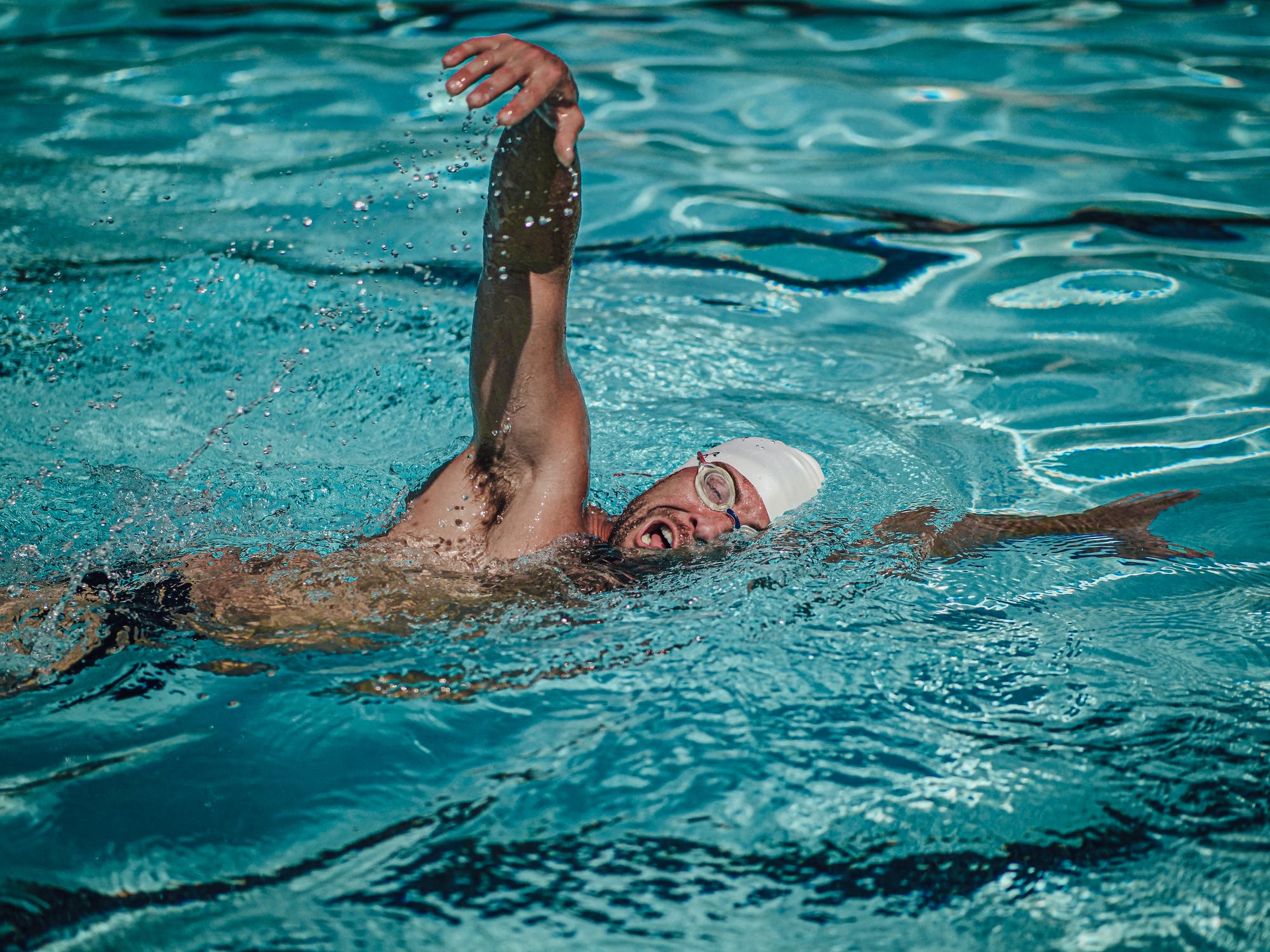If you have the fear of staying around large water bodies, or you are not confident enough to trust your swimming skills or swimming techniques, this articulated guide will make you feel like a fish in the water. You can do it, just take action on it.
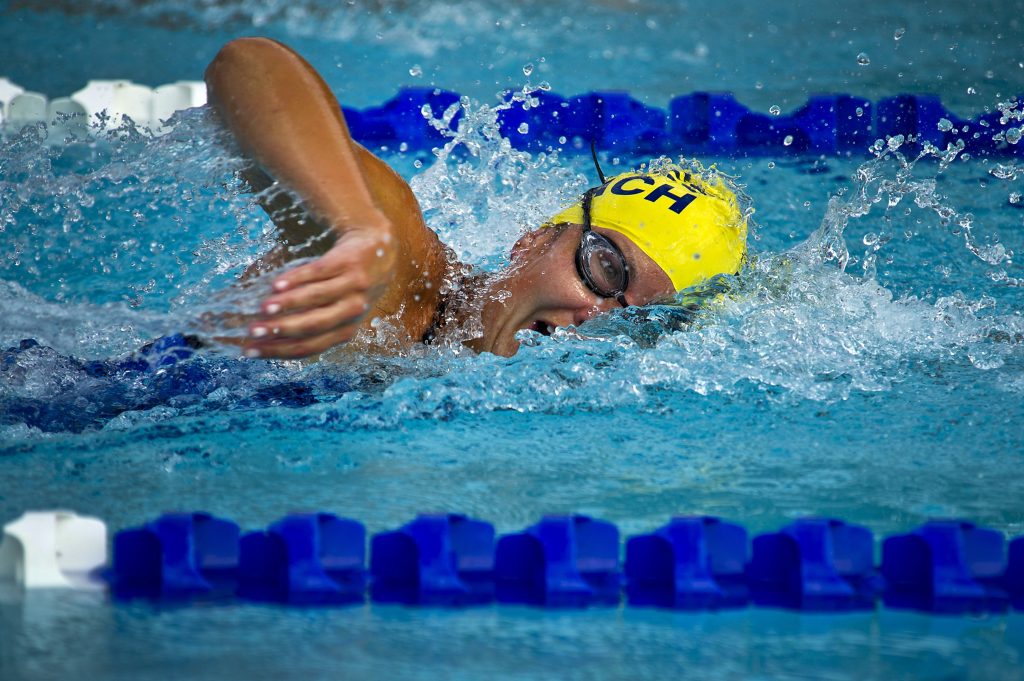
let’s imagine you surf through the vacation photos of your friend who works with the United Nations Agency and has just returned from a sea vacation, what do you feel? Envy? Definitely no.
Is it fear? well, then you are in the same boat as celebrities such as Carmen Electra, Snoop Dogg, Sandra Bullock, and Richard Branson. All of these people are afraid of water and it can become a big problem.
If you just don’t have much confidence in your swimming skills, our articulated guide will help you finally feel like a fish in the water, you can do it! just make an effort.
At the end of this article, you will find a small bonus that might save your life one day.
The 7 Swimming Techniques You Should Know
1. Overcoming Fear

Fear is among one of the biggest barriers or hindrances that individuals have to overcome while learning to swim.
You might be surprised to know that 60% of Americans are afraid of deep water and 45% are frightened of water over their heads.
To deal with it, and to prove to do world how brave you are, there are simple techniques to overcome fear. Below are the techniques.
READ ALSO: Kroc Center Swim Lessons: The Best Reviews
Swimming Techniques to Overcome Fear
- Breathe in sufficient air.
- Take different poses, and feel how the water itself lifts your body to the surface, but don’t forget that the depth should not be more than one or one and a half meters (1 or 1.5 M), which is 3 – 5 feet. one step at a time.
2. Learning to Breathe While Swimming

Now, you can’t argue that the way you breathe is super important during swimming. Can you? no, you can’t, so the next logical thing to do is to learn to breathe while swimming.
Swimming Techniques to Breathe Correctly While Swimming
- Breathe in through your mouth when you are above the water, and breathe out through your nose or mouth when under the water.
- Try to develop a rhythm (schedule) of time for breathing in and out.
- One more exercise you should practice is to hold your breath, you never know when it can come in handy.
3. Making Friends With the Water

If you perceive the water as something hostile and dangerous, revise your attitude. Imagine it’s your good friend, tender, caring, and funny.
READ ALSO: 14 Important Swim Meet Survival Kit in 2022
Swimming Techniques For Making Friends With the Water
- Lie back on the water surface.
- Spread out your arms to your sides, and relax. Feel how the water supports your waist and slowly moves you as if you are on big swings.
- Or you can try lying on your front on the water surface with a pair of swim Goggles, Nose clip, Earplugs, or a Swim Snorkel firmly in place and watch the life going on below the water.
It will help you to feel more confident and comfortable in the water. This way, concentrating on the underwater world will switch your attention, and you will relax.
4. Learning to Use Your Legs for Swimming
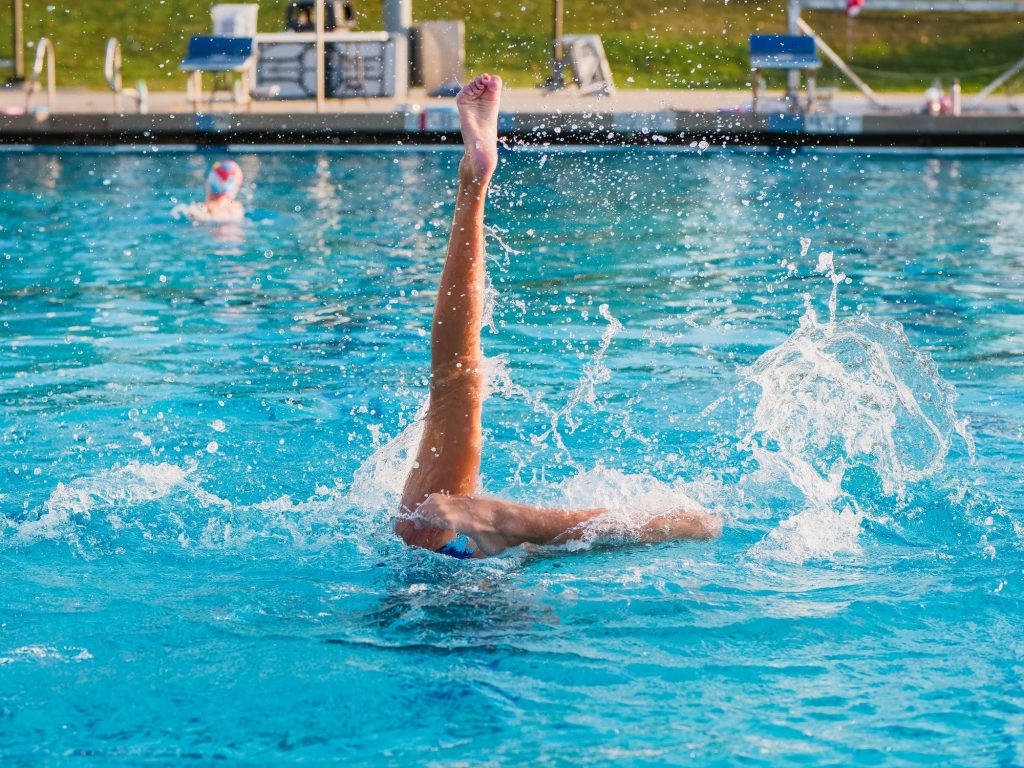
If you have managed to learn all the activities above, let’s get down to swimming itself.
Swimming Techniques to Use Your Legs for Swimming
- First of all, you need to learn to use your legs, this exercise is called the crawl. You need to stretch your arms and grab the side of the pool or a swimming board.
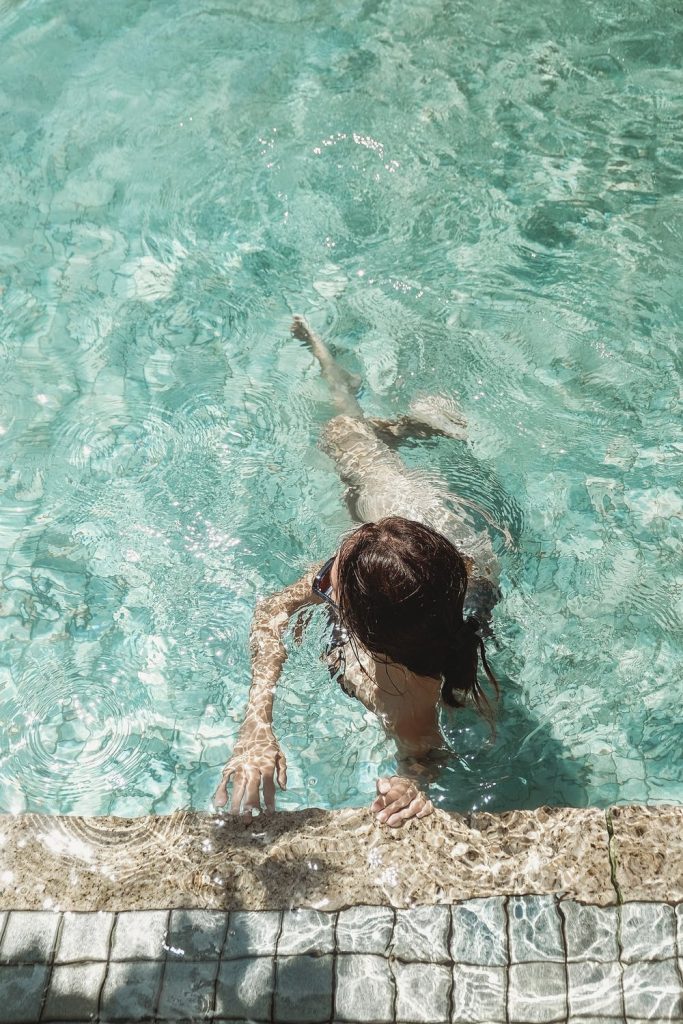
- If you are steady, move one leg up and down, and then repeat it with the other leg. It will turn out better if you bend your legs only slightly trying to stretch out your feet. You should move only your hips.
- One more important exercise to use your legs for swimming is called the breaststroke technique.
To perform the breaststroke exercise, you need to hold on to a swimming board with your hands, then spread your legs outwards and back in different directions bending your knees and pushing, pushing forward.
Don’t get embarrassed if you feel you look like a frog, it’s meant to be like that.
5. Learning to Use Your Arms for Swimming

Congratulations! If you can confidently and rhythmically use your legs, you have passed this level, time to move on to the next one. It will show you how to use your arms.
Swimming Techniques to Use Your Arms for Swimming
- The crawl technique; start working your legs using the crawl method, at the same time place your arms alongside your torso and begin to lift them over the water making half circles in the air.
- Stretch back your head as much as possible. As your arms go under the water, they should draw half-circles at the level of your body and then return to the starting position.
Mind that your hand should be stretched out and should paddle in sequence.
- Now, turn to your front and paddle using your arms one after the other. You should pass your arms under the water in half-circular motions every time returning to the starting position.
- Breathe in when your arm rises into the air turning your head in its direction. What you should not forget is to coordinate the movements of your arms and legs. If you feel confident, you can practice the breaststroke technique.
How do you do a breaststroke?
When pushing forward with your legs, stretch your arms forward as if they were an arrow, then spread your arms out simultaneously in a symmetrical half-circular motion, bringing them together at your breastbone and then moving them back to the starting position.
An important thing is that; when you spread your arms out, lift your head above the water and draw in air. If you still don’t cherish the feeling of your head underwater, it’s possible to swim with your head always raised.
6. Treading Water
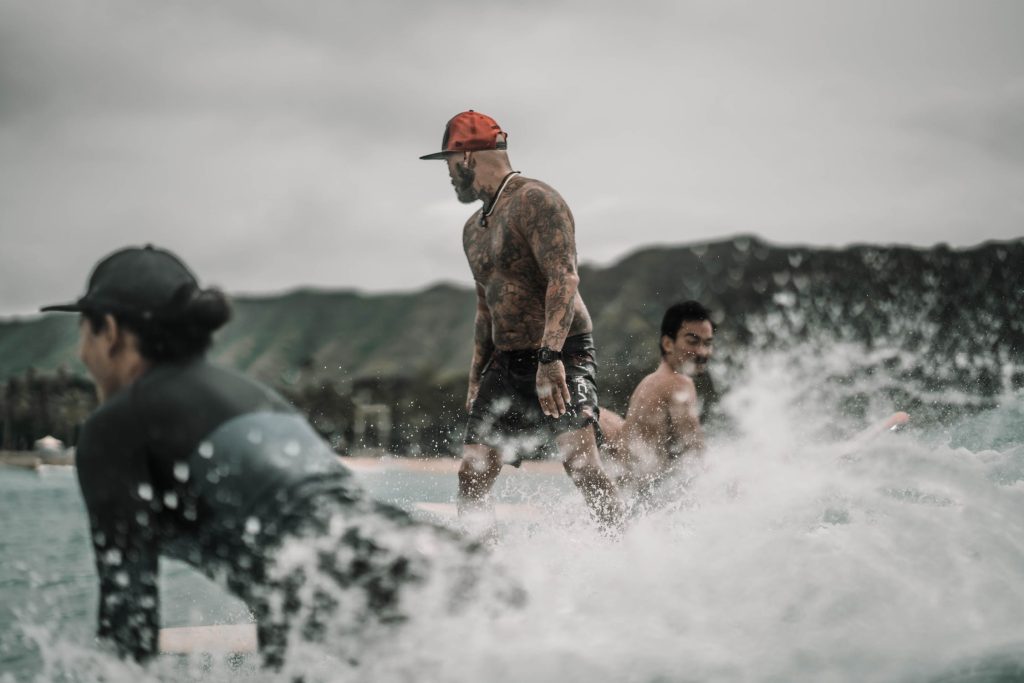
Oh! great! you feel like a professional now, but don’t hurry to swim across the Bosporus. You still have things to learn, for example, to tread water vertically.
READ ALSO: Important Prodoh Swim Reviews in the United States
Swimming Techniques for Treading Water While Swimming
- To do this, you need to move your legs as with the breaststroke, dragging water under you.
- Spread your arms out to your sides and make circular motions with them, It will help you to float.
- Another variant is to tuck in your outstretched legs and imitate riding a bike, with your arms bent at the elbows and moving in circular motions away from your body.
7. Learning to Swim Underwater
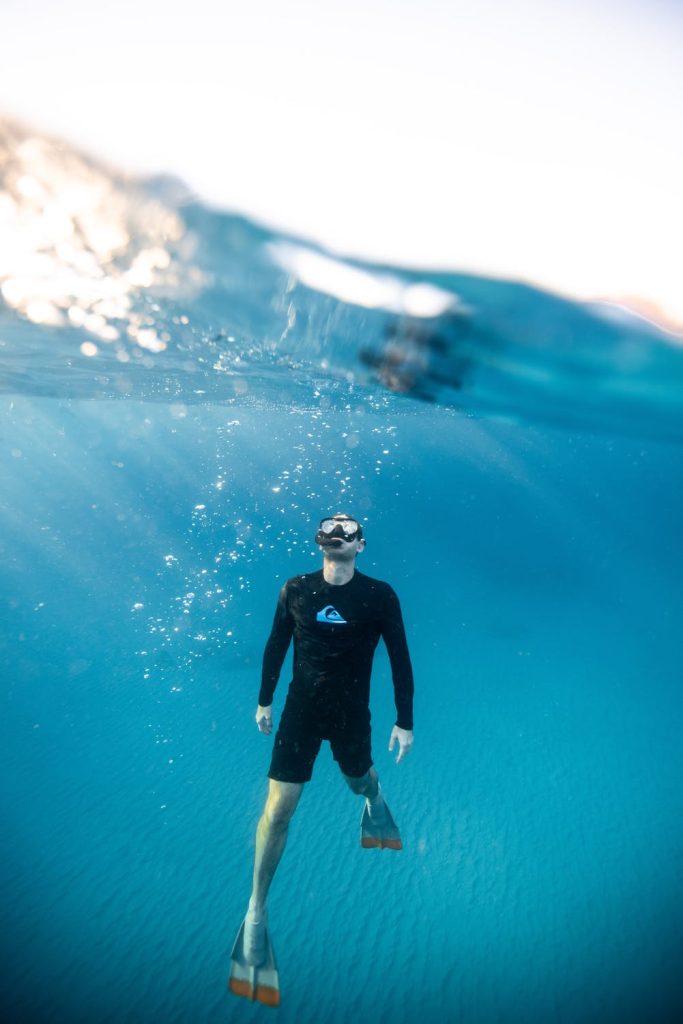
Now you can undoubtedly enjoy any holiday near the sea to the fullest, but there is still one thing that can make the experience even more interesting, and it’s swimming underwater.
Swimming Techniques to Swim Underwater
- Push off the floor and dive into the water from where you are standing.
- Place your arms in front of you, forming a narrow shape. Then pull your chin down towards your chest but don’t touch it.
- Push forward slightly in the direction of some point in front of you.
- When in the water, you can use the arm movements from the breaststroke, pushing forward every time you stretch them out.
- You can use one leg at a time in sequence as you do with the breaststroke and crawl or move like a dolphin in waves. If so, you will probably appreciate how flippers or swim fins can help in this style of swimming.
Above are the 7 swimming techniques to save your life. Well, you seem to be ready to go to the big water now, but don’t forget that safety comes first. It is important, safety comes first.
How to Keep Yourself Safe from the Dangers of Swimming
- If you think it is a good idea to swim after taking a glass of wine, you are wrong! if you have consumed alcohol, do not swim.
- If you feel pain, dizziness, or cramps, get out of the water immediately.
- Do not follow other’s examples in jumping from a pier, it can be extremely dangerous!
- Swim only on well-maintained sandy beaches, in places without strong currents, where there are lifeguards and where the water is regularly checked.
Finally, as a promised bonus, there is some information not known by everybody, but everybody has to know it;
When you are swimming in the sea, there might be a danger of getting caught in a tide which will take you away from the coast.
In a situation like this, it is crucial not to lose your head. Don’t try to fight the tide, you will be left with no strength to get yourself to the shore.
It will help much better if you start to control your breath, stop panicking, and try to approach the coast swimming first parallel to it and then little by little coming closer in a motion diagonal to the time.
Well, that’s it! let all your swims be safe and enjoy the water.
We have a lot of interesting and helpful blog posts on everything about swimming on this blog, don’t forget to check them out and read other swim blog posts.
